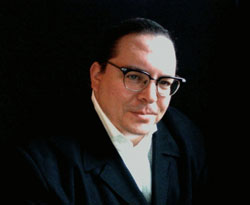For Release: September 14, 2009
Workshops & Tutorials Drive 127th AES Convention
Beyond MP3; Blu-Ray; Pimp Your Mix & Haydn’s Bicentenary
NEW YORK: In an atmosphere charged with new ideas and bristling with the introduction of revolutionary and evolutionary technologies, AES Convention Workshops and Tutorials cover an extremely broad agenda. “Balancing an advanced Workshops’ program with more fundamental Tutorial presentations is a demanding challenge,” remarks 127th AES Convention Committee Chair Agnieszka Roginska. “As an educator (U Mass. Lowell), author, engineer, and producer, Workshop & Tutorials Chair Alex Case has drawn from his vast reservoir of industry knowledge and sources to develop a singularly broad and ambitious program.”
Highlights of the twenty-two Workshop and seven Tutorial presentations include:
1080p and MP3: We Got the Picture. What Happened to the Sound? Chair, Michael Fremer and a panel that includes John Atkinson, Stereophile; Steve Berkowitz, Sony / BMG; Greg Calbi, Sterling Sound; Alan Douches, West Side Music; Bob Ludwig, Gateway Mastering & DVD and EveAnna Manley, Manley Audio Labs will examine incongruity between video’s leap from 480i 4:3 to 1080p 16:9… The bigger the screen, the better. And audio… Not so much! In fact, "mainstream" audio has degraded from 44.1 K/16 bit to low bit rate MP3. Today people "hear" music, while actually listening is almost unheard of (pun intended). How does the industry reconnect consumers to good sound? And, why are so many young people snapping up vinyl instead of virtually free MP3s downloads?
Blu-ray as a High Resolution Audio Format for Stereo and Surround: Chair, Stefan Bock and his panel will examine Blu-ray as the only HD media format offering up to 8 channels of uncompressed high resolution audio, a decision that has eliminated a major obstacle in bringing high-res stereo and surround sound music to the market. The concept of utilizing Blu-ray as a pure audio format, positioned as successor to both SACD and DVD-A will be explained. Operational functionality and its functional duality making it usable both with and without visuals will be demonstrated with products already on the market.
What Will Perceptual Audio Coding Stand for 20 Years from Now? Chaired by: Anibal Ferreira, ATC Labs, this workshop focuses on how new trends are likely to reshape the meaning and scope of Perceptual Audio Coding (PAC) over the next twenty years. A panel of experts will discuss current issues and analyze signs that suggest significant shifts and gains. How efficiently can we compress speech, singing and individual instrument sounds? And, what advances are anticipated?
Can 21st Century Technology Outdo the Audio Achievements of the 20th? Chair, Terry Manning, Compass Point Studios and an expert panel will discuss the criteria that made classic gear great, and explore how the designs and philosophies that created and implemented them will continue to evolve. Issues to be addressed include: Requirements and uses in the studio, and the difficulties encountered in developing them.
Audio Myths—Defining What Affects Audio Reproduction: Chair, Ethan Winer, RealTraps and panelists including: Jason Bradley, Intel Corporation; Poppy Crum, Johns Hopkins School of Medicine and James Johnston, DTS, Inc, will probe ongoing arguments over basic scientific principles fully understood for over fifty years, e.g. the value of ultra-high sample rates and bit depths; the importance of dither, clock jitter, and ultra-low distortion... Moving your head an inch can change the frequency response substantially due to acoustic comb filtering; Masking makes it difficult to hear artifacts even 40 dB below the music, yet some people are convinced they can hear artifacts 100 dB down or lower. This workshop will identify what really matters with audio reproduction.
Pimp Your Mix: Grammy-winning mixers Bassy Bob Brockmann (Christina Aguilera, Babyface, Fugees) and Ryan West (Rihanna, Kanye West, John Legend) bring a key feature of their popular Elements of Mixing, Pimp your Mix, seminar to the AES. They take a production previously mixed by an upcoming producer, tear it apart and reassemble it with state-of-the art and vintage analog gear. They also engage some of their favorite plug-ins to add luster, drama, impact, and clarity to the mix. Ryan and Bassy demonstrate tips on making vocals shine, organizing bass frequencies, and using balancing, eq, and reverb to create a sense of space and clarity in the mix.
Max for Live: Chair. Yukio King, Ableton AG and a panel of industry leaders will explore the integration of Max/MSP/Jitter into the Ableton Live platform and how it is designed to expand the possibilities of digital audio workstation software. A discussion of Max for Live from the perspective of violinist and composer, Mari Kimura, in the context of her ongoing work with interactive performance technology will provide an invaluable case history.
Virtual Haydn: Recording and Performing in Virtual Acoustics: Chair, Wieslaw Woszczyk, McGill University and a distinguished panel will celebrate the Hayden Bicentenary by revealing how a leading keyboardist, producer, and virtual acoustics architect collaborated on the first application of “virtual acoustics” for the recording of Virtual Haydn. Released this year on four Blu-ray discs by Naxos, the collection features over fourteen hours of music performed on seven instruments in nine “virtual rooms,” ranging from Haydns’ own home study to the Holywell Music Room in Oxford, England. Each room was acoustically measured and digitally mapped, then precisely recreated in the recording studio to enable the performer to interact with his virtual surroundings in real time.
For comprehensive abstracts of the entire Workshop and Tutorial program please visit the Detailed Calendar of Events at: http://www.aes.org/events/127/calendar/calendar.cfm
Photo: 127th AES Committee Workshop & Tutorials Chair Alex Case
The 127th AES Convention will be held at NY’s Javits Convention Center Oct. 9 – 12, 2009.
###
The Audio Engineering Society was formed in 1948 by a group of concerned audio engineers. The AES counts over 14,000 members throughout the U.S., Latin America, Europe, Japan and the Far East. The organization serves as the pivotal force in the exchange and dissemination of technical information for the industry. For additional information visit http://www.aes.org

